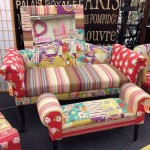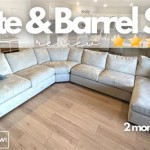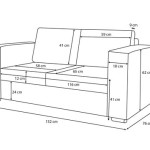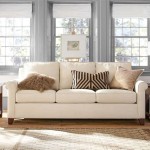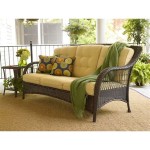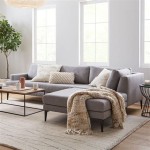```html
Pet-Friendly Fabrics for Sofas: Choosing the Right Material
Selecting the right fabric for a sofa when living with pets requires careful consideration. Pets, with their claws, fur, and occasional accidents, can significantly impact the appearance and lifespan of upholstery. Choosing a durable and easily cleanable fabric is essential to maintaining a comfortable and aesthetically pleasing living space. This article explores various fabric options, highlighting their strengths and weaknesses in relation to pet ownership, and provides key considerations for informed decision-making.
Durability and Resistance to Damage
The primary concern for pet owners is the fabric's ability to withstand scratching and tearing. Pets, especially cats, often exhibit natural scratching behaviors, and a vulnerable fabric will quickly show signs of wear and tear. Certain weaves and fiber compositions offer superior resistance to damage, minimizing visible marks and extending the sofa's lifespan.
Tightly woven fabrics are generally more resistant to clawing than loosely woven materials. The tight weave prevents claws from easily snagging and pulling threads. Denim, for example, is a durable cotton fabric with a tight weave that can withstand significant abuse. However, denim can fade over time and may not be as aesthetically pleasing as other options for some homeowners.
Microfiber, also known as microsuede or faux suede, is a synthetic fabric known for its remarkable durability and tight weave. Its dense construction resists scratches and snags, making it a popular choice for pet owners. The smooth surface also prevents fur from easily embedding into the fibers, simplifying cleanup. Microfiber's stain resistance is another advantage, as it repels liquids and allows for easy blotting of spills.
Leather, particularly top-grain leather, is a durable and luxurious option. While not immune to scratches, leather develops a patina over time, which can often mask minor imperfections. Leather is also relatively easy to clean, as spills can be wiped away with a damp cloth. However, leather can be more expensive than other fabric options, and it can be susceptible to cracking if not properly conditioned.
Outdoor fabrics, designed to withstand harsh weather conditions, are inherently durable and resistant to damage. These fabrics are often made from solution-dyed acrylic or olefin, which are highly resistant to fading, staining, and mildew. While they may not be the softest option, outdoor fabrics offer exceptional durability and ease of cleaning, making them suitable for homes with active pets.
Stain Resistance and Cleanability
Accidents happen, and pet owners need a fabric that can withstand spills, muddy paws, and other messes. The ease with which stains can be removed is a crucial factor in selecting a pet-friendly fabric. Fabrics with inherent stain resistance or those treated with stain-repellent finishes offer significant advantages.
Solution-dyed fabrics, such as those often used in outdoor furniture, have color infused throughout the fibers, rather than just being applied to the surface. This process makes them highly resistant to fading and staining, as the color is less likely to leach out when cleaned. These fabrics can typically be cleaned with bleach solutions without affecting the color.
Fabrics with stain-repellent finishes, such as those treated with Teflon or Scotchgard, provide an extra layer of protection against spills and stains. These finishes create a barrier that prevents liquids from penetrating the fibers, allowing for easy blotting. However, these finishes can wear off over time and may need to be reapplied periodically.
Darker colors and patterned fabrics can help to conceal stains and pet hair. Lighter colors tend to show dirt and stains more readily, while darker colors can camouflage minor imperfections. Patterns can also help to disguise pet hair and other debris, reducing the frequency of cleaning.
Woven patterns with texture can also help disguise wear and tear and soiling. The uneven surface can hide minor damage or stains, making them less noticeable. Consider the texture of the weave when making a selection.
When accidents do occur, prompt action is essential. Blotting spills immediately with a clean cloth can prevent them from setting into the fabric. Following the manufacturer's cleaning instructions is crucial to avoid damaging the upholstery. Using appropriate cleaning solutions designed for the specific fabric type can help to remove stains effectively without causing discoloration or degradation.
Considerations for Pet Hair and Odor
Pet hair is a common nuisance for pet owners. Fabrics that easily trap hair can require frequent vacuuming and can contribute to allergen buildup. Similarly, fabrics that absorb odors can create an unpleasant living environment. Choosing fabrics that minimize hair retention and resist odor absorption is essential for maintaining a clean and fresh-smelling home.
Smooth fabrics, such as microfiber and leather, tend to repel pet hair more effectively than textured fabrics. Hair is less likely to cling to the smooth surface, making it easier to vacuum or wipe away. Tightly woven fabrics also minimize hair retention, as there are fewer gaps for hair to become embedded in.
Velvet, while luxurious, can be a magnet for pet hair due to its pile. The short, dense fibers can trap hair, making it difficult to remove. While some velvets, such as those made from synthetic fibers, may be easier to clean than others, velvet is generally not the most pet-friendly option.
Regular vacuuming is essential for removing pet hair from upholstery. Using a vacuum cleaner with a brush attachment can help to loosen and lift hair from the fabric. Vacuuming at least once a week, or more frequently if needed, can prevent hair from accumulating and becoming embedded.
Odor-resistant fabrics are treated with antimicrobial agents that inhibit the growth of bacteria and fungi, which can contribute to unpleasant odors. These fabrics are particularly beneficial for pet owners, as they can help to neutralize pet odors and maintain a fresh-smelling home.
Fabric protectors can also provide some odor resistance, though this is typically a secondary benefit to the stain and moisture protection. However, any topical treatment should be applied after thoroughly cleaning the sofa to ensure optimal adherence and effectiveness.
In summary, selecting the right fabric for a sofa in a pet-friendly home involves a multifaceted approach. Considering durability, stain resistance, cleanability, and resistance to pet hair and odors are essential. By carefully evaluating these factors and choosing a fabric that meets your specific needs and lifestyle, pet owners can enjoy a comfortable and aesthetically pleasing living space without compromising on the well-being of their furry companions.
```
Hector L Shape Sofa Pet Friendly Fabric Living Room Furniture Singapore Sg Bedandbasics

Pet Friendly Sofas Here S Everything You Need To Know Snug

How To Choose A Pet Friendly Sofa Rose And Grey

Katie Fabric Sofa Pet Friendly

A Guide For Pet Friendly Sofas Sofology

Victoria Modular Recliner Sofa Pet Friendly Fabric Sofas Singapore Bedandbasics

14 Pet Friendly Couches In 2024 Best For Dog And Cat Owners
How To Choose The Best Pet Friendly Sofas And Sectionals Vevano

4 Best Pet Friendly Sofa Fabrics For Your Home Urban Concepts

Victoria 3 Seater Recliner Sofa Pet Friendly Fabric Sofas Singapore Bedandbasics

